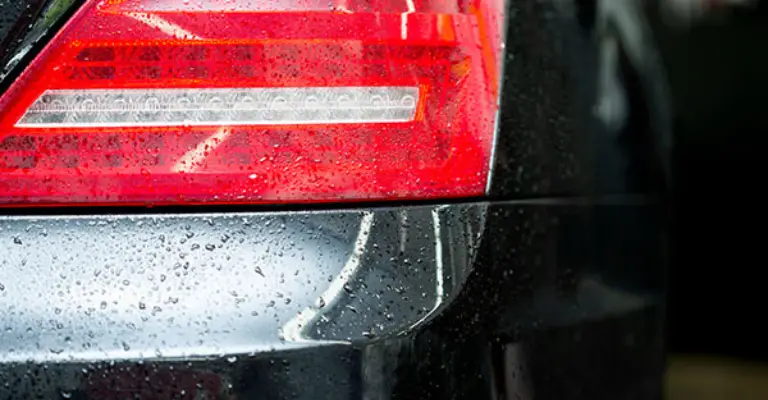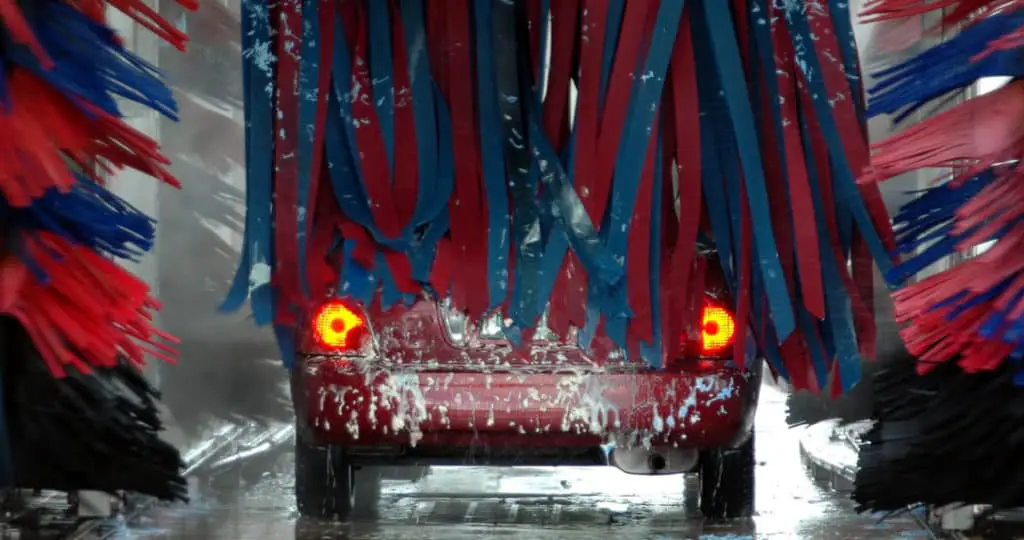- How to Clean Car Carpets Quickly (Without An Extractor) - July 10, 2024
- Can You Touch Up Clear Coat On A Car? Yes and No (Here’s Why) - November 25, 2023
- How To Wax A Car By Hand (For Beginners) - November 14, 2023
Last Updated on January 4, 2025 by Nate Schnell
Imagine cruising down the road with your car gleaming in the sun, turning heads as you pass by. That sleek, polished look isn’t just about making a statement—it’s about protecting your investment. And the secret to keeping that showroom shine? Regular car waxing.
Waxing your car offers more than just aesthetic appeal. It creates a barrier against harmful elements, enhances the paint’s longevity, and makes cleaning a breeze. Whether you’re a car care pro or a curious beginner, understanding why waxing matters is essential for maintaining your vehicle.
Let’s explore the standout benefits of car waxing and what happens if you skip this crucial step.
What Does Waxing Your Car Really Do?
Car wax works by creating a thin, protective layer over your vehicle’s clear coat. This layer shields your paint from damage caused by UV rays, debris, and weather exposure. But that’s not all—waxing enhances the color depth and gives your car that irresistible, glossy finish.
The Top Benefits of Waxing Your Car
1. Protects Against Scratches and Swirl Marks
When you apply car wax, you’re creating a buffer between your car’s paint and the outside world. Wax prevents dust, dirt, and small debris from grinding into your paint, helping to minimize surface scratches.
- Why it matters: Small scratches and swirl marks can dull your paint over time.
- Pro tip: Regular waxing helps keep the clear coat intact, making your car look newer for longer.
2. Shields Your Car from UV Rays
The sun’s ultraviolet rays can be brutal on your car’s paint, causing it to fade, oxidize, and lose its luster. Waxing acts like sunscreen for your car, absorbing some of the sun’s harmful rays and slowing down the effects of sun damage.
- Result: Richer, longer-lasting color.
3. Repels Water with Hydrophobic Protection
One of the most satisfying sights after waxing is seeing rainwater bead up and slide right off your car. This hydrophobic effect prevents water spots and reduces the chance of corrosion caused by lingering moisture.
- Bonus: A waxed surface stays cleaner longer because grime and mud don’t stick as easily.
4. Makes Cleaning Easier
A smooth, waxed surface means that dirt, bugs, and road grime can’t cling as stubbornly. The next time you wash your car, you’ll notice how easily the dirt slides off.
- Time saver: Fewer scrubbing sessions and faster washes.
5. Adds a Stunning Shine
There’s no denying the wow factor of a freshly waxed car. The oils in car wax enhance your paint’s natural color and shine, making your car look polished and professional.
- Perfect for: Car shows, special occasions, or just everyday pride in your ride.
6. Guards Against Environmental Factors
Your car faces countless hazards daily—rock chips, bird droppings, tree sap, dust, and road salt. A layer of wax serves as a protective shield, reducing the likelihood of permanent damage.
- Prevention pays: Less damage means fewer trips to the body shop.
7. Saves Money in the Long Run
Yes, waxing your car requires time and some upfront costs for quality wax products. However, regular waxing can save you from costly paint repairs or replacements down the line.
- Cost-effective care: Prolonging your paint’s lifespan reduces the need for touch-ups and resprays.
8. Helps Maintain Resale Value
A well-maintained exterior signals to potential buyers that you’ve taken good care of your car. A glossy, scratch-free paint job can significantly boost your car’s resale value.
- Curb appeal counts: A shiny car is more appealing to buyers and can lead to higher offers.
What Happens If You Skip Waxing?
Neglecting regular waxing may not cause immediate damage, but over time, you’ll start to notice:
- Fading and oxidation: UV exposure causes the paint to lose its vibrancy.
- Increased scratches: Without a protective layer, debris can scratch the paint more easily.
- Stubborn grime: Dirt and contaminants cling to unwaxed surfaces, making cleaning harder.
- Dull appearance: Your car’s once-sleek finish may become lackluster and dull.
Alternatives to Traditional Waxing
If you’re looking for longer-lasting protection, consider these options:
- Paint sealants: Offer durable protection, lasting up to six months.
- Ceramic coatings: Provide a semi-permanent layer that can last years but often require professional application.
- Spray waxes: Ideal for touch-ups between full wax jobs but with shorter-lasting effects.
How Often Should You Wax Your Car?
The ideal waxing frequency depends on factors such as weather conditions and driving habits. However, a good rule of thumb is:
- Every 3 months: For general protection.
- Every 6 weeks: If you live in extreme climates or frequently drive in harsh conditions.
Final Thoughts: Keep Your Car Looking Its Best
Regular waxing is one of the simplest ways to preserve your car’s beauty and integrity. Whether you’re looking to turn heads or just protect your ride from wear and tear, adding a layer of wax can make all the difference.
So, the next time you consider skipping this maintenance step, remember: a waxed car isn’t just cleaner—it’s stronger and better equipped to handle whatever the road throws its way.



